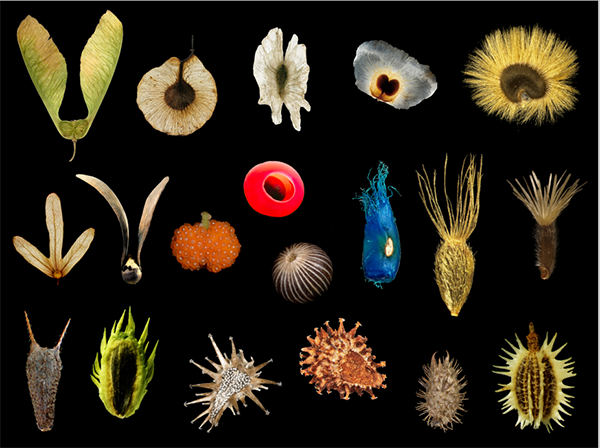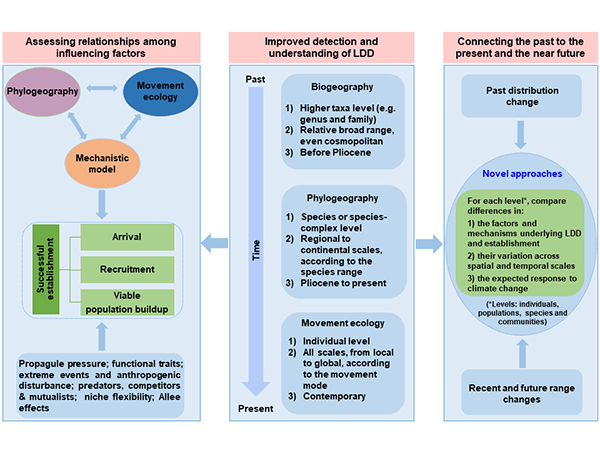The review was published in Trends in Ecology & Evolution.
LDD beyond the range of a species is an important driver of global biodiversity distribution. Although LDD events are rare and difficult to quantify and predict, they are profoundly important in biogeography, where they can impact biota assembly, responses to natural and anthropogenic environmental change, and the spread of invasive species.

Fig.1 Diversity of seed form and function. (Image by KIB)
As we know, dispersal is only effective if it is followed by successful establishment, yet recent studies in plant LDD have tended to focus only on the dispersal stage, meaning that insufficient attention has been given to post-dispersal establishment. Hence a conceptual synthesis of post-LDD establishment across different taxa and spatial-temporal scales is conspicuously lacking.
Prof. LI’s team has been working on intercontinental biogeography, phylogeography, and LDD of plants for decades. Through extensive literature research, the team summarized current knowledge of the post-LDD establishment phase in plant colonization. They identified six key determinants of establishment success: propagule pressure; functional traits; extreme events and anthropogenic disturbance; predators, competitors, and mutualists; niche flexibility; and the Allee effect.
On this basis, they proposed a general quantitative framework for post-LDD establishment, aiming to provide a quantitative theoretical framework for the study of colonization after LDD as well as a means of assessing the risk of species invasion.

Fig. 2 Conceptual view, showing factors determining plant LDD and subsequent establishment. (Image by KIB)
According to the researchers, biogeography, phylogeography, and movement ecology should be integrated in order to more accurately reveal the occurrence, timing, and mechanism of LDD events.
In addition, the relationships among factors that influence establishment should be studied to determine their relative importance. Furthermore, differences in mechanisms of establishment after LDD should be compared across both geological (millions of years) and recent (Anthropocene) time scales.
Overall, this review provides conceptual and quantitative baselines for filling current knowledge gaps concerning establishment and advancing our understanding of the processes that shape global biota dynamics.
“An improved understanding of establishment after LDD will help us understand the past and predict the future in an era of rapid anthropogenic changes. It may also help mitigate some of the adverse impacts of these changes by reducing biological invasions and assisting plant movements in response to climate change,” said Prof. LI.
This work was supported by the Strategic Priority Research Program of CAS, the National Natural Science Foundations of China, and the Youth Innovation Promotion Association of CAS, among others.

Fig. 3 A conceptual framework explaining challenges and potential directions for future research about plant long-distance dispersal (LDD) and subsequent establishment. (Image by KIB)
(Editor:YANG Mei)




